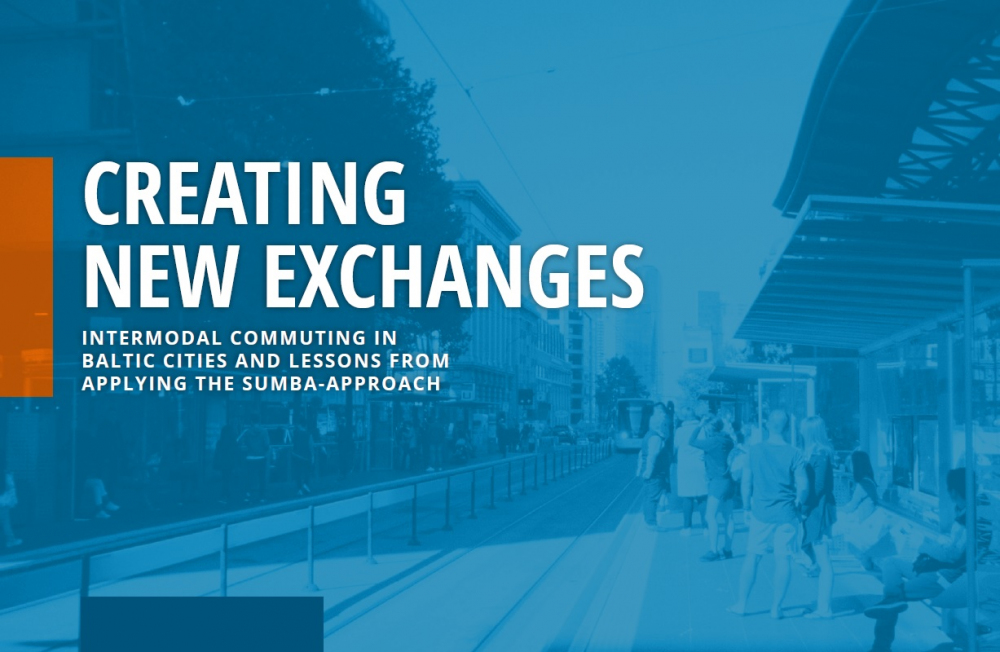A new publication "Creating New Exchanges: Intermodal Commuting in Baltic Cities and Lessons from Applying the SUMBA-approach" summarizes the key tools developed in the three-year project Sustainable urban mobility and commuting in Baltic cities (SUMBA) used to tackle challenges related to commuting. The report describes experiences in putting these tools into practice by the partner organisations including cities, municipalities, NGOs and research institutions in the project consortium.
In many large and mid-sized cities, cars are queueing up on arterial roads that lead to cities from the surrounding functional urban area (FUA). Changing car-based commuting to sustainable modes of transport must go together with the re-orientation of the transport system towards enabling convenient intermodal travel. Intermodal travel in the SUMBA context involves seamlessly combining different means of public transport, together and with other means in a single trip. By considering intermodality as a key element of sustainable commuting, cities and their surrounding FUAs will be able to create a more flexible transport system able to respond to changing mobility patterns in the future.
Helping cities and their FUAs transition to a more sustainable and intermodal transport system by developing and applying the SUMBA-approach was the objective of the SUMBA project. The approach is grounded by the philosophy of addressing commuting in a systemic way following the sequence: analyse – reflect – respond and that is guided by data and participation. The SUMBA partner organisations followed this philosophy to develop several analytical and planning tools meant to support municipal planners, decision-makers and stakeholders in developing evidence-based solutions to tackle the issue of commuting. The end goal was to develop an approach that leads to creating a master plan for commuting and fills the gaps related to planning for sustainable mobility in FUAs. The tools included:
• Proposal for a commuting and intermodality-focussed SWOT analysis
• Guidelines for modelling and data gathering
• Collection of good practice examples related to intermodal commuting
• Index for measuring the readiness for intermodal commuting (INTERMODALYZER)
• Proposal on how to develop a commuting master plan (CMP)
In addition to these tools were the various participatory processes and dialog activities, including working groups, reference groups, workshops, public outreach and surveys. These were an important part of the project and help to anchor the SUMBA-approach as good practice in transport and mobility planning.
The overall lessons of the project are categorised under four different themes: Guiding documents; Surveys, modelling and data gathering; Participation and cooperation; and International collaborations. In addition, an overview of each partner and associate partner’s method for applying the SUMBA approach is included in the section Commuting master plans at a glance.
You can download the document below.

